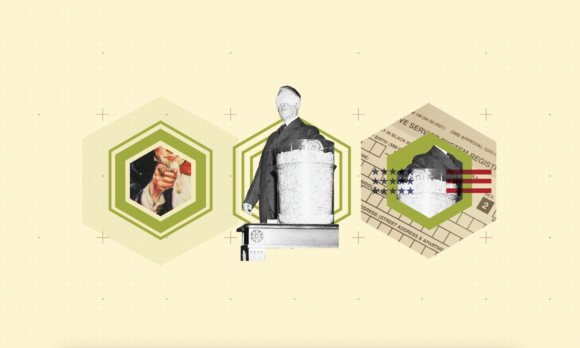Military, Veterans & Society
Within Military, Veterans & Society
In the era of the All-Volunteer Force, the military has so far largely been able to maintain relatively high standards for who will be accepted while still recruiting enough personnel to meet manpower needs, though troubling signs indicate this may not remain true moving forward. Servicemembers enter the military with both risk and protective factors for how they will fare both during and after their military service. While serving – which the majority do for only a few years – they may experience a variety of exposures while also benefitting from a variety of support structures, formal and informal. After transitioning back into civilian life, a process many find challenging, veterans are often eligible for an array of benefits from the public, private, and nonprofit sectors. Despite the outpouring of support shown to military personnel, veterans, and their families, however, many express concern about a growing civil-military divide in which society at large does not understand their experiences. This may, in turn, affect the propensity for the next generation to serve. Throughout these time frames, there are issues that the federal government can directly affect, while others are beyond the scope of government intervention. Crucially, there is a complex interplay of pre-service, in-service, and post-service experiences that should be considered.
The CNAS Military, Veterans, and Society program therefore addresses issues facing America’s service members, veterans, and military families throughout this life cycle. Emphasis areas include the future of the All-Volunteer Force, trends within the veteran community, and civil-military relations. The program produces high-impact research that informs and inspires strategic action; convenes stakeholders and hosts top-quality public and private events to shape the national conversation; and engages policymakers, industry leaders, Congress, scholars, the media, and the public about challenges and opportunities for veterans and the military community.
As the environments in which the U.S. military operates increase in complexity, the need to attract and retain top talent becomes increasingly apparent — a significant challenge during a period of extraordinarily low unemployment. In 2019, the CNAS Military, Veterans, and Society Program launched a series of commentaries addressing how the Department of Defense and military services can better support members of the All-Volunteer Force and their families. The series features a diverse group of guest contributors and CNAS experts who put forward thought-provoking ideas on an array of topics that affect servicemembers, their families, and transitioning personnel. We hope these perspectives will spark frank discussions and ultimately lead to policy changes that enhance readiness and improve lives in military communities.
Military
CNAS has published reports and commentaries including comprehensive looks at the future of the all-volunteer force and the propensity of youth from military families to serve, examinations of the role of ROTC, assessments of military suicide, and updates on the status of incorporating women into combat arms. In partnership with the Athena Leadership Project, the MVS program has explored how to better support military caregivers and leverage women’s leadership.
Moving forward, the MVS program will continue exploring how to support traditionally under-targeted populations in the Department of Defense, as with its race in the military discussion series. The team will also research how the military can increase propensity to serve, enhance recruiting, improve retention, and optimize support to servicemembers and their families in a changing landscape.
Veterans
CNAS has led the way in producing cutting-edge research on challenges facing veterans, including a series of local, state, and regional veteran needs assessments. The MVS team published reports on veteran employment and entrepreneurship, and analyses of the federal, philanthropic, and collaborative “sea of goodwill” that exists to support veterans.
To expand on this foundation, the MVS program will delve more deeply into disparate needs minority veterans may experience and explore cutting edge opportunities for enhancing veterans overall economic outcomes.
Society
CNAS has hosted a number of events on the civil-military divide, public perceptions of the military community, and published reports on topics including the effects of that divide on veteran employment.
Looking ahead, the MVS program plans to continue delving into aspects of the civil-military divide and the role the humanities may play in bridging that divide.
Highlights
-
The Role of County Veteran Service Officers
While much attention has been paid to federal, state, and nonprofit services, there is little research on the role of local governments, particularly at the county level....
By Katherine L. Kuzminski, Nathalie Grogan & Elena LoRusso
-
Tailoring Transition
While TAP is designed to be comprehensive, standardized, and broadly applicable, this means that certain subpopulations may have different or more specific needs that are curr...
By Nathalie Grogan, Katherine L. Kuzminski, Elena LoRusso & Jon Tishman
-
Massachusetts Veteran Needs Assessment: During the Pandemic and Beyond
COVID-19 has impacted the veteran community in unprecedented ways, shining a spotlight on food insecurity, mental health, and childcare at a very challenging time....
By Nathalie Grogan, Elizabeth Howe, Danielle Lazarowitz, Emma Moore & Kayla M. Williams





















